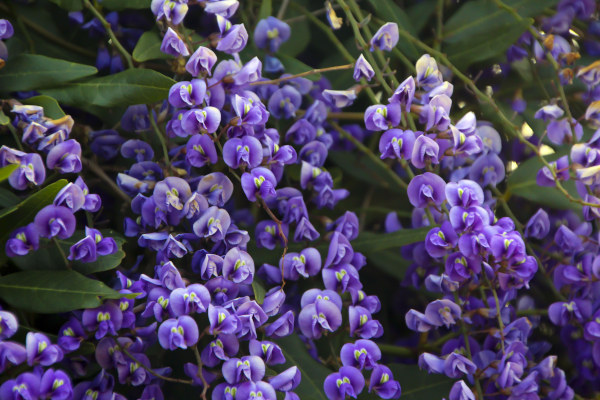How to grow Hardenbergia
This member of the pea family contains just three species, all twining or trailing evergreen climbers found growing throughout Australia. It is cultivated for its very early colourful sprays of lightly scented, pea-like flowers (reminiscent of its well-known cousin, wisteria) and handsome foliage.
Hardenbergia is also known by the common names of coral pea and Australian lilac.

Zantedeschia is a genus of flowering plants from the family Araceae and is native to southern Africa. With a rich history dating back to the Ancient Romans, these deciduous or semi-evergreen perennials have been used as a symbol of celebration. Zantedeschia was Named after Professor Giovanni Zantedeschia, an Italian botanist.
There are two main forms of Zantedeschia: hardy and tender. Hardy forms of the plant can be grown outdoors, enjoy moist soil and full sun or partially shaded conditions - these are known as Arum lilies. Tender forms of Zantedeschia prefer being grown in containers or pots and should be brought inside over the winter - these are known as Calla lilies.
With tuberous flora in all colours from whites, yellows and oranges to deep reds and purples, Zantedeschias are not to be overlooked in any garden, as long as they have sufficient sunlight to grow in.
Ready to learn more about growing Zantedeschia? Read on for all there is to know...

Key Information
Soil pH
Position
Hardiness

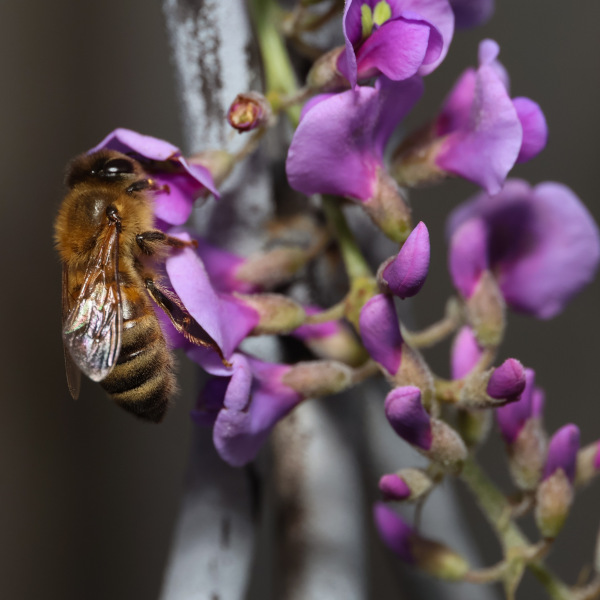
Where & when to plant Hardenbergia
Position- Full sun to partial shade
Soil- Moist, well-drained, acid to neutral
Flowering Period- Late winter to midsummer
Hardiness- Half-hardy
Our hardenbergias are hardy to around -4°C, and therefore we recommend planting outside only if you have a warm, sheltered, south-facing wall, or are in a particularly mild microclimate (perhaps an urban or coastal environment). In colder, frost-prone spots, hardenbergia is best grown in a conservatory or greenhouse. It requires bright, indirect light, so on a back wall set back from the window is ideal. Alternatively use shade netting on a window to protect it from the full glare of the sun.
Planting is best done in spring. A summer planting is also possible, though be prepared to water regularly.
How to plant Hardenbergia
In the ground
- Choose a spot against a warm, sunny wall, and, if not there already, install some form of support such as wires or a trellis.
- Clear the area of weeds.
- Dig a planting hole several times larger than the root ball. Now is the time to add a plenty of well-rotted organic matter, and in heavier soils, a generous amount of horticultural grit.
- Place the plant in the hole, angling it very slightly towards the supporting structure. Ensure no part of the rootball is above the surface of the soil, otherwise it is likely to dry out.
- Backfill with soil and firm in gently.
- Soak well with water.
- Mulch with well-rotted organic matter.
In a container
- Choose a spot against a wall or window in your cool conservatory or greenhouse, and, if not there already, install some form of support such as wires or a trellis.
- Choose an appropriate container (the bigger the better), ensuring there are plenty of drainage holes in the bottom.
- Use a good quality potting compost with plenty of horticultural grit mixed in, and, if not already present in the compost (check the description on the bag) some slow-release fertiliser granules.
- Start by partially filling the pot with compost; enough so that when placed on it the upper surface of the root ball is about 3cm lower than the top of the pot. Angle the plant it very slightly so it can be positioned to grow towards the supporting structure.
- Infill all the space surrounding the root ball with compost, firming down with your fingers then adding a little more so the plant is held tight. Ensure no part of the rootball is above the surface, otherwise it is likely to dry out.
- Pick up the pot (if you can!) and lightly tap on the potting bench or ground a few times to help further settle the compost around the plant.
- Soak well with water.
A mulch with horticultural grit will look attractive and help to prevent a ‘cap’ or crust forming on the top of the compost (something container plants can suffer due to the artificial nature of their watering).
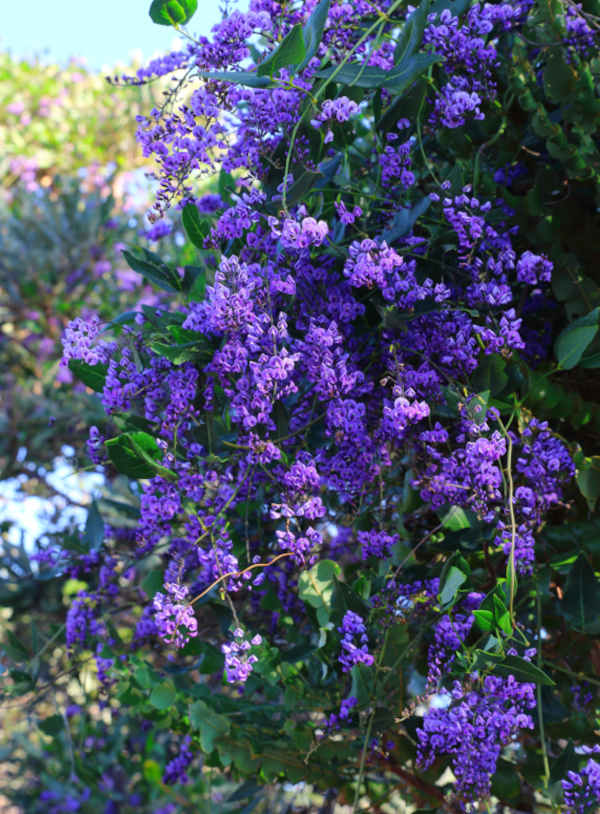
What to plant with Hardenbergia
Outside
For season defying colour during the darkest days of winter, we recommend covering your sunny, south-facing wall with a mix of hardenbergia and its equally early, yellow-flowered relative, coronilla. A climbing solanum (which also enjoys the warmth and shelter of such a wall) will take over nicely, coming into flower in summer just as the other two are beginning to wane.
A simple underplanting of euphorbia, nepeta, and erigeron will provide long-lasting flowers in a harmonious colour blend.
Inside
We love combining hardenbergia with other colourful conservatory plants such as dipladenia, jacobinia, and abutilon.
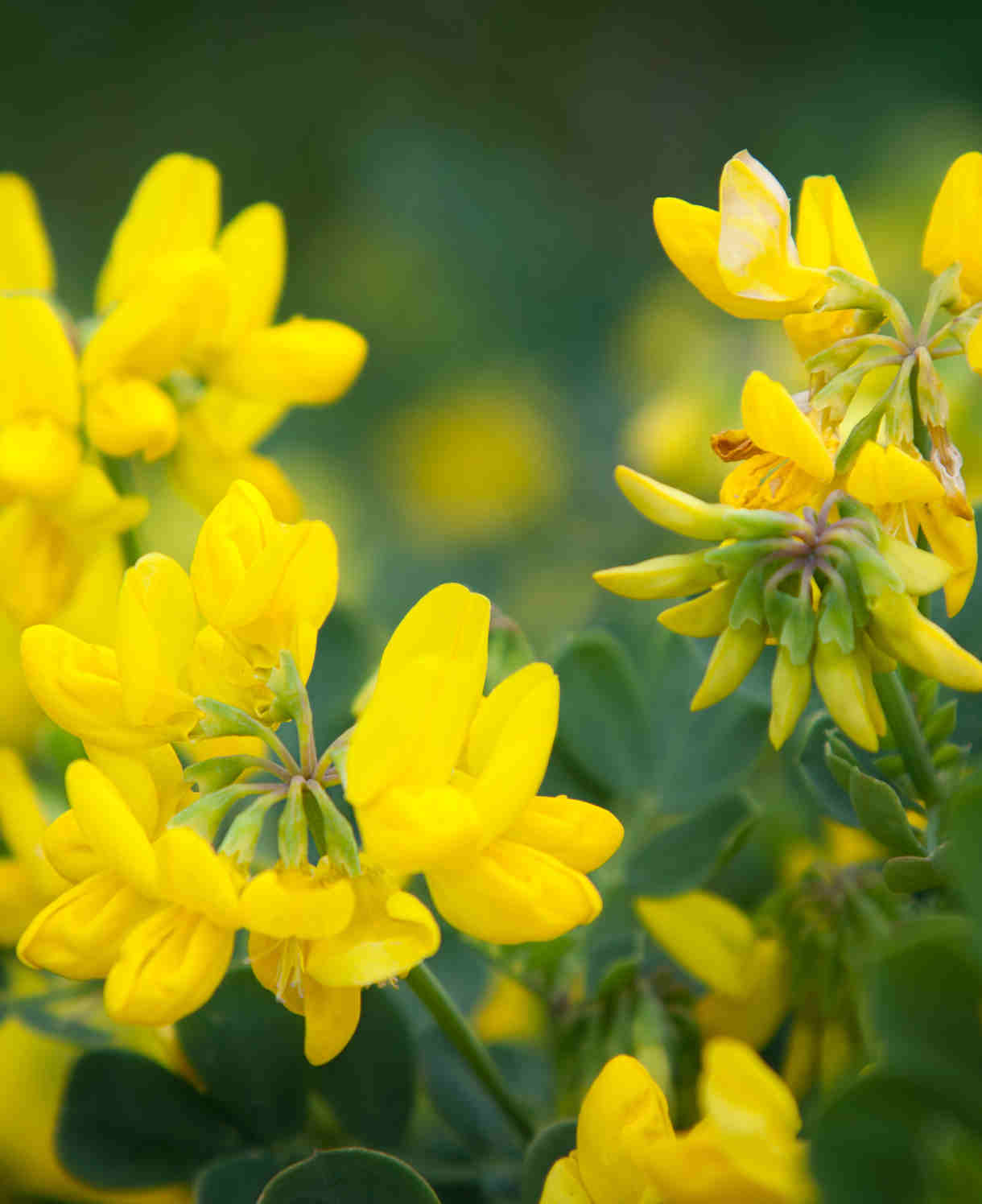
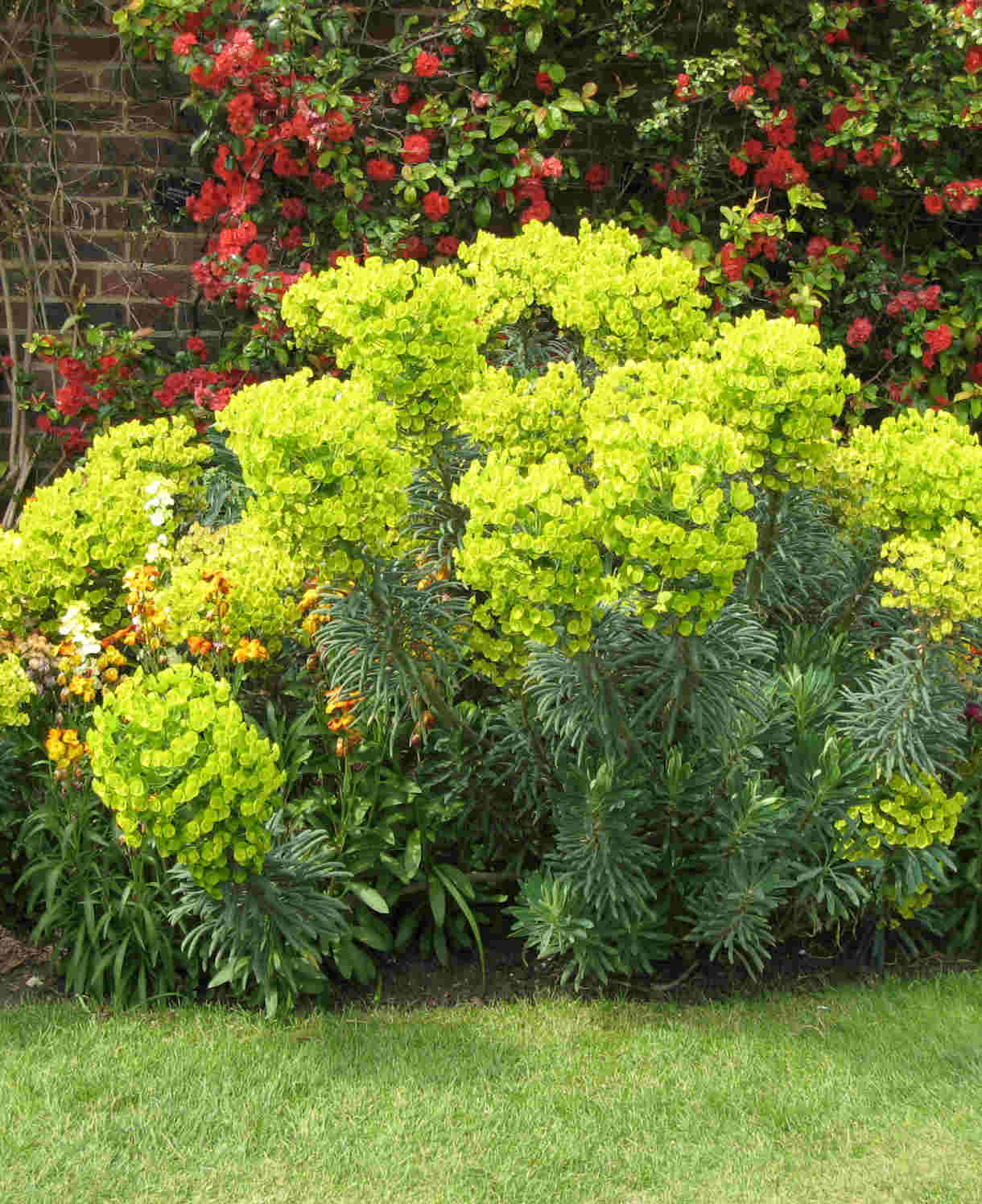
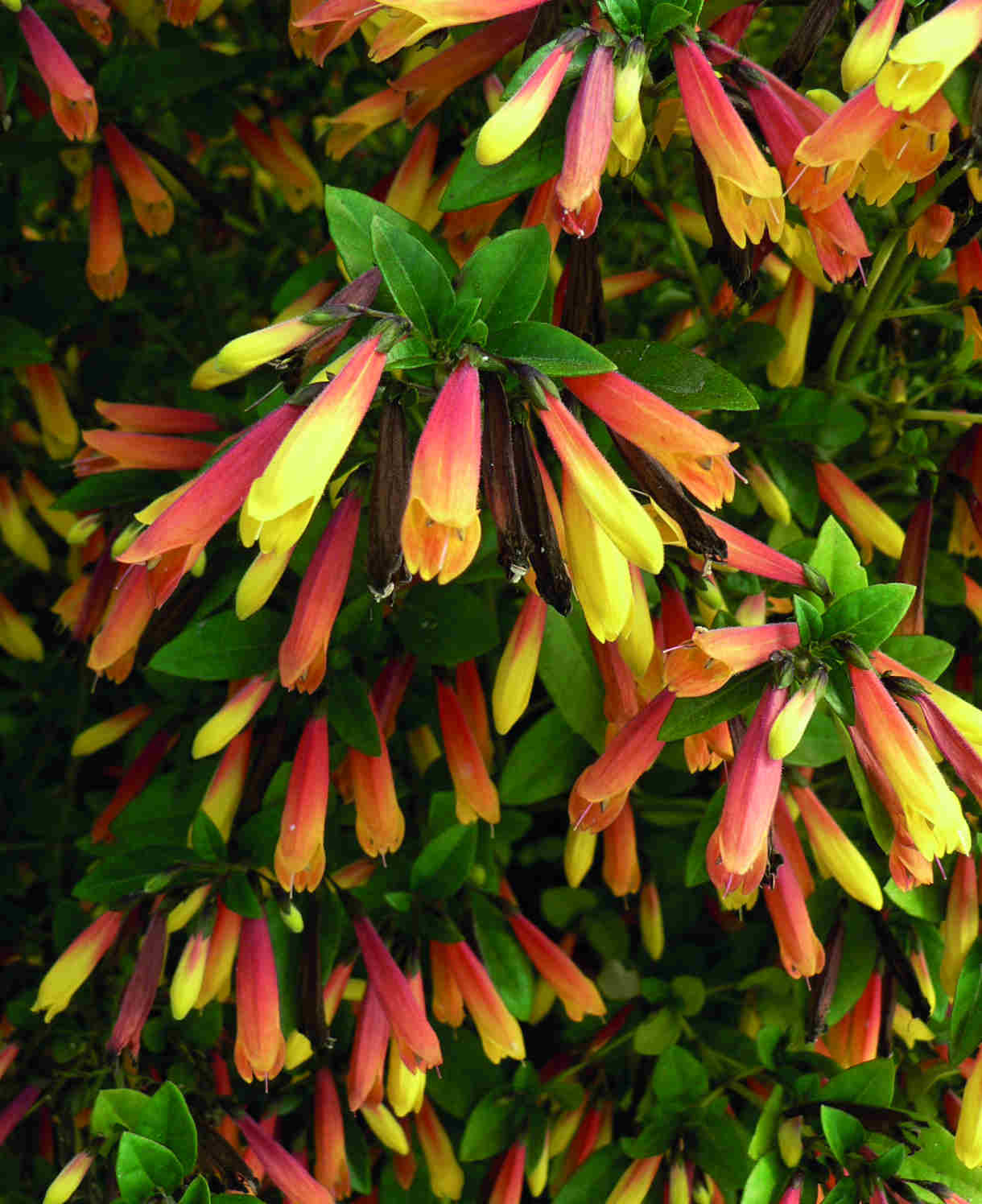
How to care for Hardenbergia
Pruning and Deadheading
Minimal pruning required. Trim lightly immediately after flowering if this is needed to maintain a certain size.
Watering
Water until established (which usually means for the first growing season), and then in very dry spells thereafter.
Container-grown hardenbergia will require regular watering throughout the growing season. Allow the top few centimetres of compost to dry out between soakings.
Cold Protection
Our hardenbergia are hardy to around -4°C, and will require the protection of a warm, sheltered, south-facing wall to overwinter outside.
Otherwise, grow as a greenhouse or conservatory plant.
Pests and Diseases
When grown undercover, like many indoor plants hardenbergia can fall prey to pests such as spider mite and glasshouse whitefly. As always, we recommend the first line of defence to be taking the time to get the growing conditions right, as healthy, thriving plants are considerably less susceptible to pest infestations.
Spider mites flourish in dry conditions, therefore keeping your hardenbergia well-watered will help to ward these off.
White fly tend to be brought in, so inspect any plant thoroughly before introducing it to your home. An established method of control is the introduction of natural predators (tiny parasitic wasps), which are available from biological control suppliers.
How to propagate Hardenbergia
Take softwood cuttings in spring, using the soft, pliable tips of new, non-flowering growth.
- Snip cuttings off the plant, if possible taking a longer piece than the ideal eventual length of around 10cm (to allow for trimming).
- Put them in a plastic bag straight away to prevent drying out.
- with a perlite-heavy compost mix (at least 50% perlite).
- Trim the end of the cutting to just below a node (point at which leaves grow).
- Remove lowest leaves and soft tip, leaving 2-4 leaves.
- If the remaining leaves are large, cut them in half with a sharp knife (to reduce water lost through transpiration).
- Insert the cuttings into the compost and water lightly. Several cuttings can be put in the same container if there is enough space to do this without them touching.
- Place in a greenhouse or propagating unit if you have one or covered with a plastic bag on a windowsill if not (out of direct sunlight).
- Keep the cuttings misted and occasionally watered until they root. You will know this has happened when roots emerge out of the bottom of the container.
- Gently remove rooted cuttings and pot them into individual pots. Grow on in a cool yet frost-free environment such as an unheated conservatory, greenhouse, or cold frame, until they are large enough to be planted into their final position.
Common Hardenbergia Questions
- Is hardenbergia fast growing?
Hardenbergia is fast growing and will vigorously twine around everything in its path. - Does hardenbergia need a trellis?
For best results give hardenbergia some form of support to climb up (trellis or wires). Left alone it will happily scramble over the ground and/ or other plants, though if grown it outside in this country it does best with the protection of a warm, sunny wall. - Is hardenbergia hardy?
Hardenerbergia is classed as half-hardy, with a minimum temperature of around -4°C. See our ‘Cold Protection’ and ‘When and where to plant hardenbergia’ sections above for more information.
